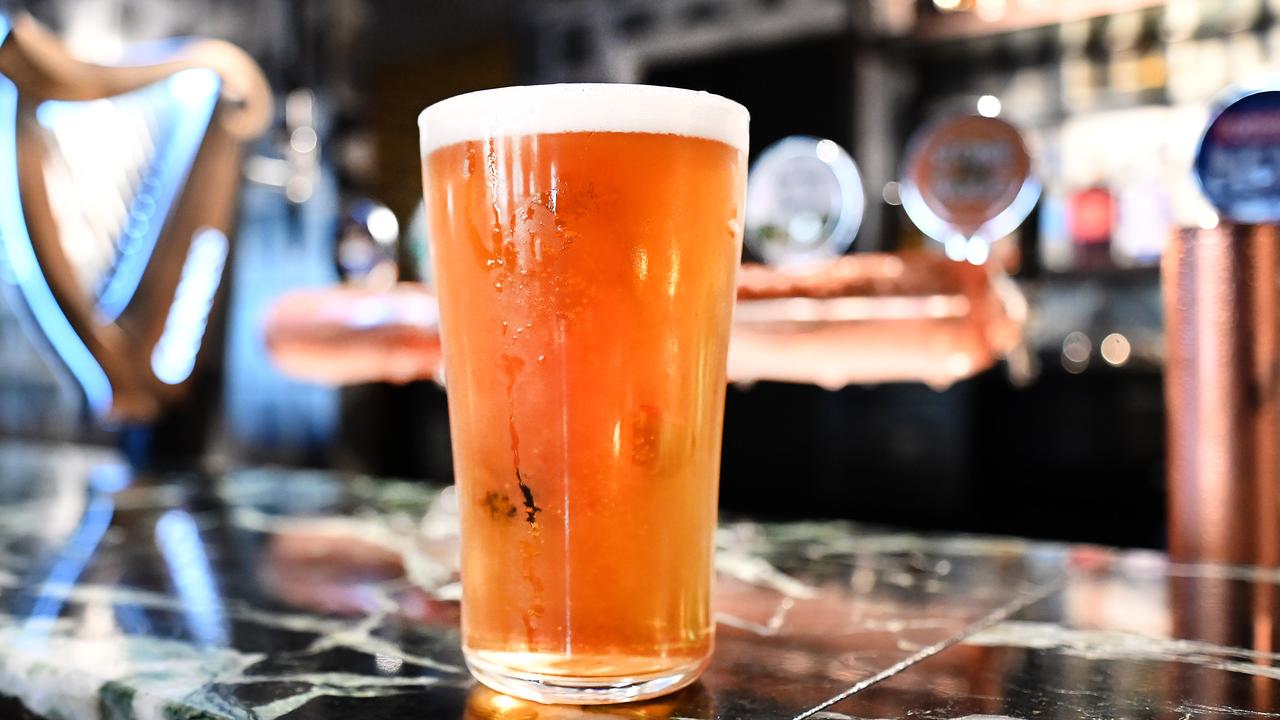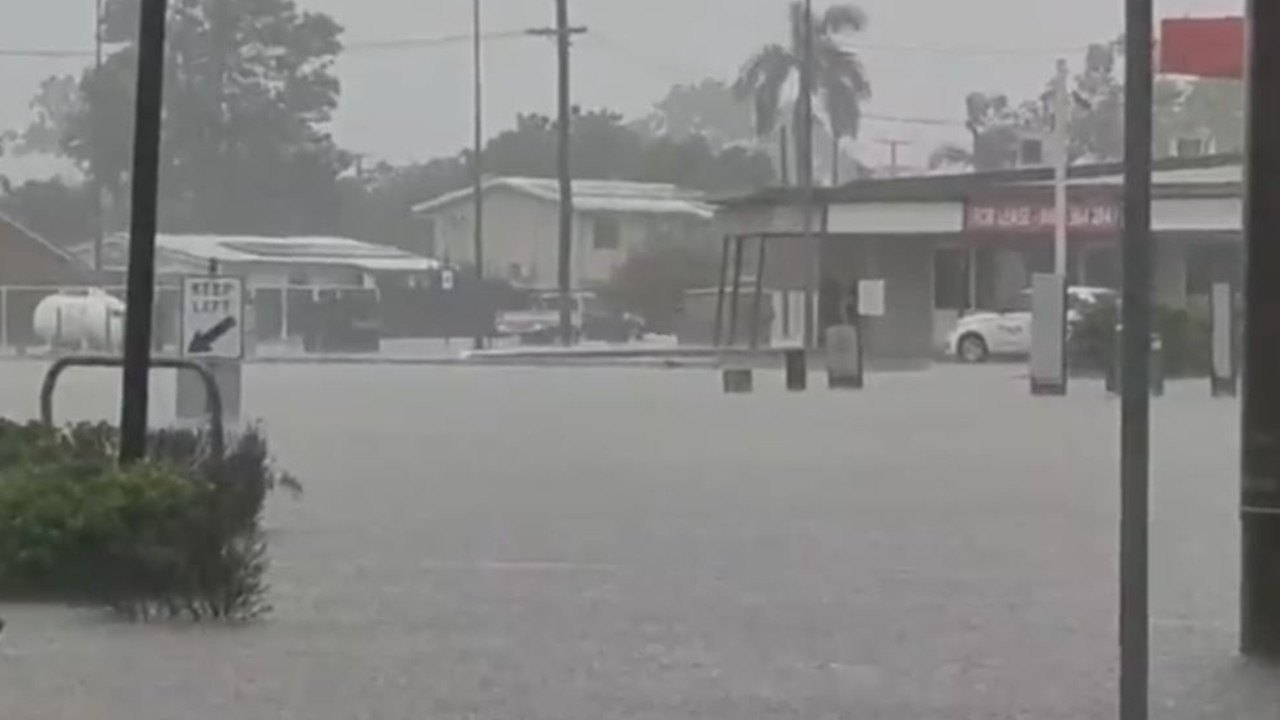Bushfires crisis: ADF troops mobilised
A contingent of 3000 ADF troops has been mobilised to assist in the response to the country's catastrophic bushfires.
A 3000-strong contingent of troops - made up of reserves and specialist personnel including engineers, medics and veterinarians - will commence work on the ground today.
On Sunday, troops prepared to be deployed from the Holsworthy Barracks in NSW to Tamworth, Wollondilly, Nowra, Mudgee, Maitland and Wingecarribee as part of a transport and logistics effort. Those sent to Mudgee will cut fire trails. Elsewhere, specialist personnel will offer medical, veterinary and engineering assistance, and an ADF plane will this week be used to transport 20 firefighters between Port Macquarie and Merimbula.
Operation Bushfire Assist has already seen thousands of service personnel and reservists filter through military bases and deployed in bushfire affected areas across the country.
The mass deployment comes as the focus moves from evacuations to the mammoth recovery effort, as out-of-control blazes continue to rage across multiple states.
Newspapers advertisements were posted across the country, notifying reservists about the order.
"For the first time in Australia's history, Australian Defence Force (ADF) Reserve Brigades have received a Call-Out Order of Reservists: Operation BUSHFIRE ASSIST 2019-2020," the advertisement reads.
"The Call Out will see up to 3000 predominantly Army Reservists deployed to help State Agencies throughout the fire affected areas. The majority of Reservists who have been called out come from the Australian Army's 2nd Division, 4 Brigade, 5 Brigade, 6 Brigade, 9 Brigade, 17 Sustainment Brigade and the broader ADF community."
Defence has published full page ads in today’s newspapers notifying Army Reserve members of the call out for bushfire assistance. The call out is compulsory. @abcnews @abcbrisbane #AustralianFires pic.twitter.com/GrA7pVeJAz
— Shelley Lloyd (@shelleymlloyd) January 5, 2020
#OurPeople have departed to assist those affected by the #AustralianFires. @7th_RAR pers who left today will work with local authorities, volunteer agencies & #YourADF on the ground. Darwin pers will follow within 24hrs.
— HQ 1 Bde (@HQ_1Bde) January 5, 2020
Stay safe & we hope the weather brings some relief soon. pic.twitter.com/6Pc6zzsIoW
Chief of Joint Operations Lieutenant General Greg Bilton said the ADF had already processed reservists following the call-up of 3000 members on Saturday.
“Most of them had already appeared (to volunteer before the call-up) and then we’re retrospectively going through the administration process,” he said.
“One of the things I’d say is when it comes to supporting your fellow Australians, I don’t have any trouble getting volunteers to come and meet their Reserve obligations, and I’m finding that across the board.”
Mr Bilton said the reservists covered a wide range of professions invaluable to the fire response.
“I’ve got everything from engineers, to specialists logisticians to medics, to doctors, to vets — we have a number of vets that have made themselves available based on the some of the challenges with wildlife and family pets,” he said.
“It’s the full gambit and one of the beauties of the Reserves is we’re able to draw on a whole range of skill sets that are just highly applicable in these particular circumstances.”
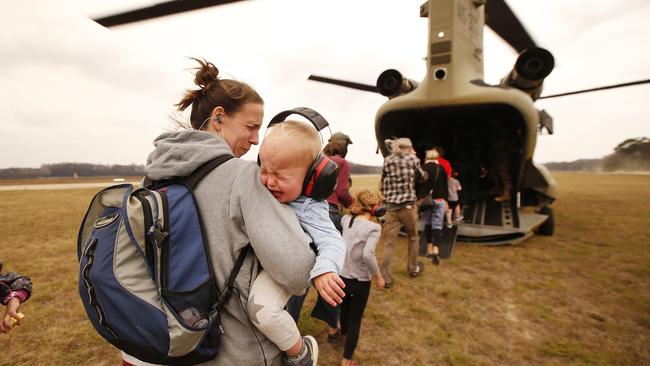
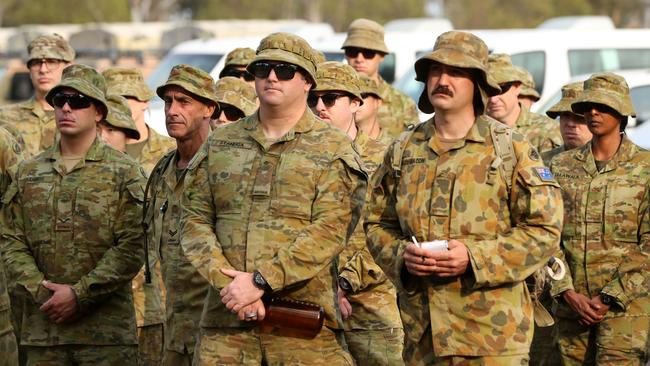
The deployment of reservists to assist with the bushfire effort on this scale is unprecedented in Australia. According to Mr Bilton, defence has been in contact with counterparts in New Zealand, Singapore and Papua New Guinea to source more support, including helicopters.
General Angus Campbell said the compulsory call out of thousands of ADF reservists to help with national disaster recovery had never been seen before.
“We’re in for the long haul and also very aware of the immediate need to assist fellow Australians,” Mr Campbell told media in Canberra on Sunday.
“The work of the ADF is and will continue to be in compliment and close coordination with state authorities.”
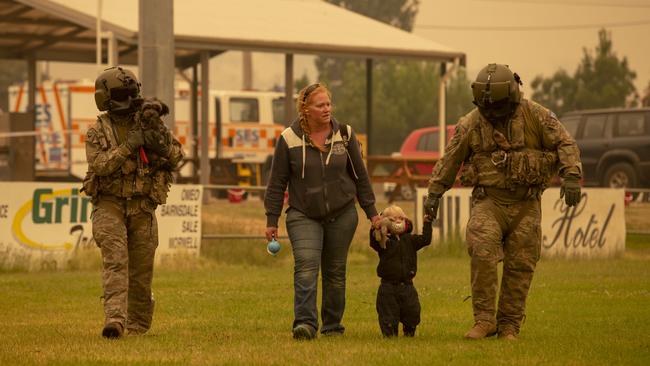
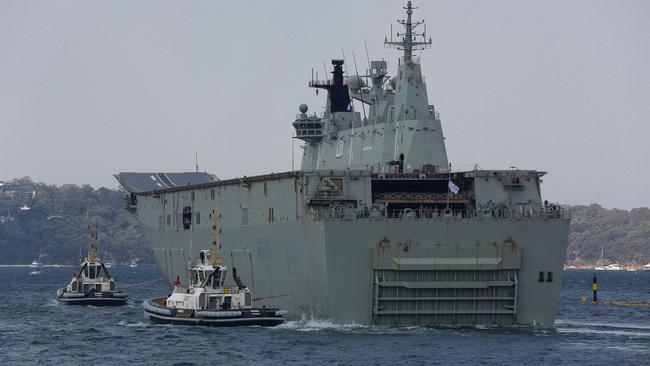
Australia’s largest navy ship, HMAS Adelaide, is playing a leading role in the nation’s bushfire support effort, stationed off the NSW far south coast. Acting as a supply vessel and also offering a floating hospital, the Adelaide on Sunday reached waters off Eden where it is expected to be based for several days.
The HMAS Choules and MV Sycamore were returning to Mallacoota, from where they had previously ferried more than 1100 people.
There were 400 troops on the Adelaide, as well as 300 tonnes of emergency supplies.
Defence bases from Brisbane to Adelaide have been opened up for bushfire affected Australians, with Mr Campbell confirming some people had already taken up this offer.
Earlier, Prime Minister Scott Morrison told reporters in Canberra the “unprecedented” roll out of defence forces was a statement about the scale of the bushfire crisis.
“That step was taken as a consequence of the sheer scale that has moved beyond what is the reasonable expectation of any agency or state or territory authority,” he said.
The prime minister also defended the government’s response time in deploying the ADF, pointing to the serving personnel already assisting with the bushfire effort.
Weather conditions eased on Sunday but authorities warned the bushfire threat remained active, particularly in the nation’s southeast.
The national bushfires death toll stands at 24, with seven people still missing in Victoria, and grave fears for their wellbeing.
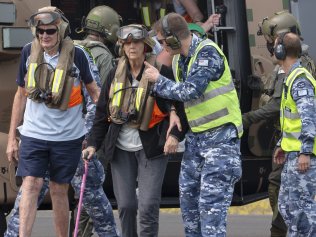
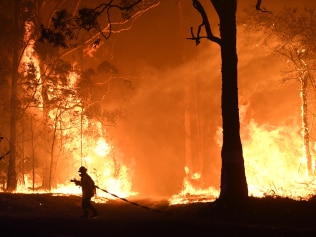
Meanwhile, former Australian Federal Police chief Andrew Colvin will head up a critical operation to help bushfire affected communities recover over the next two years.
Prime Minister Scott Morrison was in Canberra on Sunday where he announced the immediate commencement of the National Bushfire Recovery Agency to be lead by Mr Colvin.
The agency will work with states and Defence to co-ordinate recovery efforts ranging from income payments to rebuilding infrastructure and mental health support. It will not seek funding from the states, according to Mr Morrison.
“I have no doubt (the states) will have a long list of recovery tasks that they will be performing … rebuilding bridges, roads and other critical infrastructure and we will work hand in glove,” he said.
With AAP


